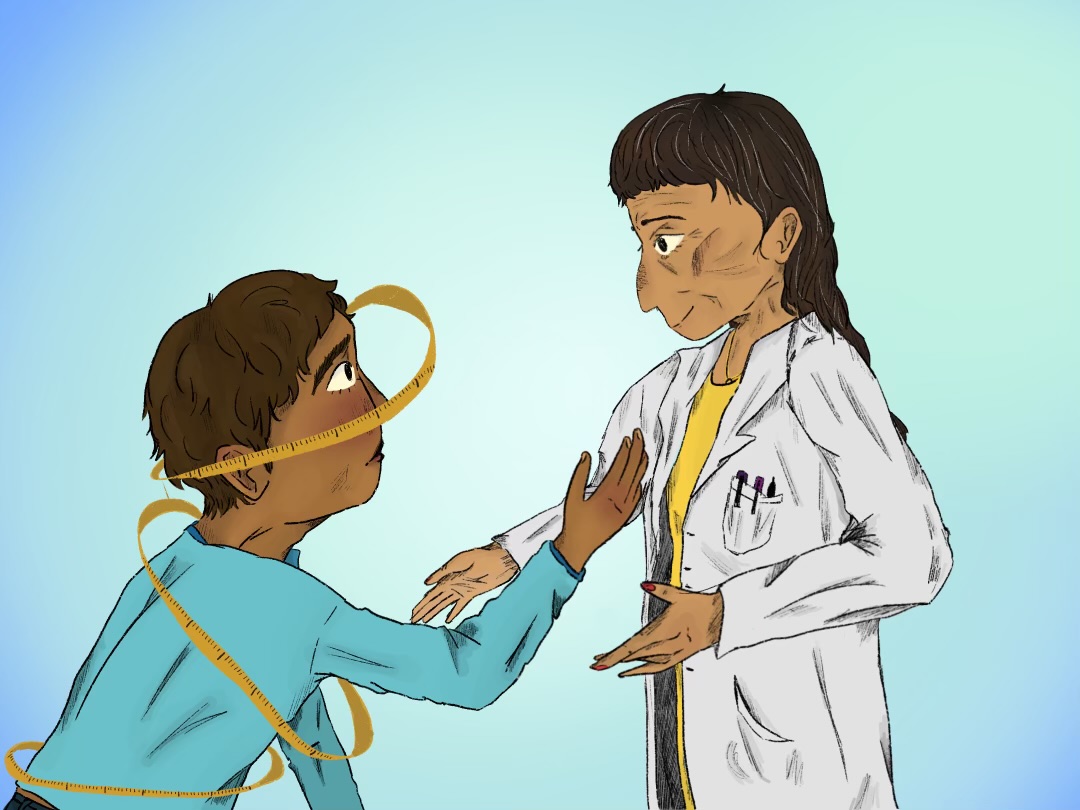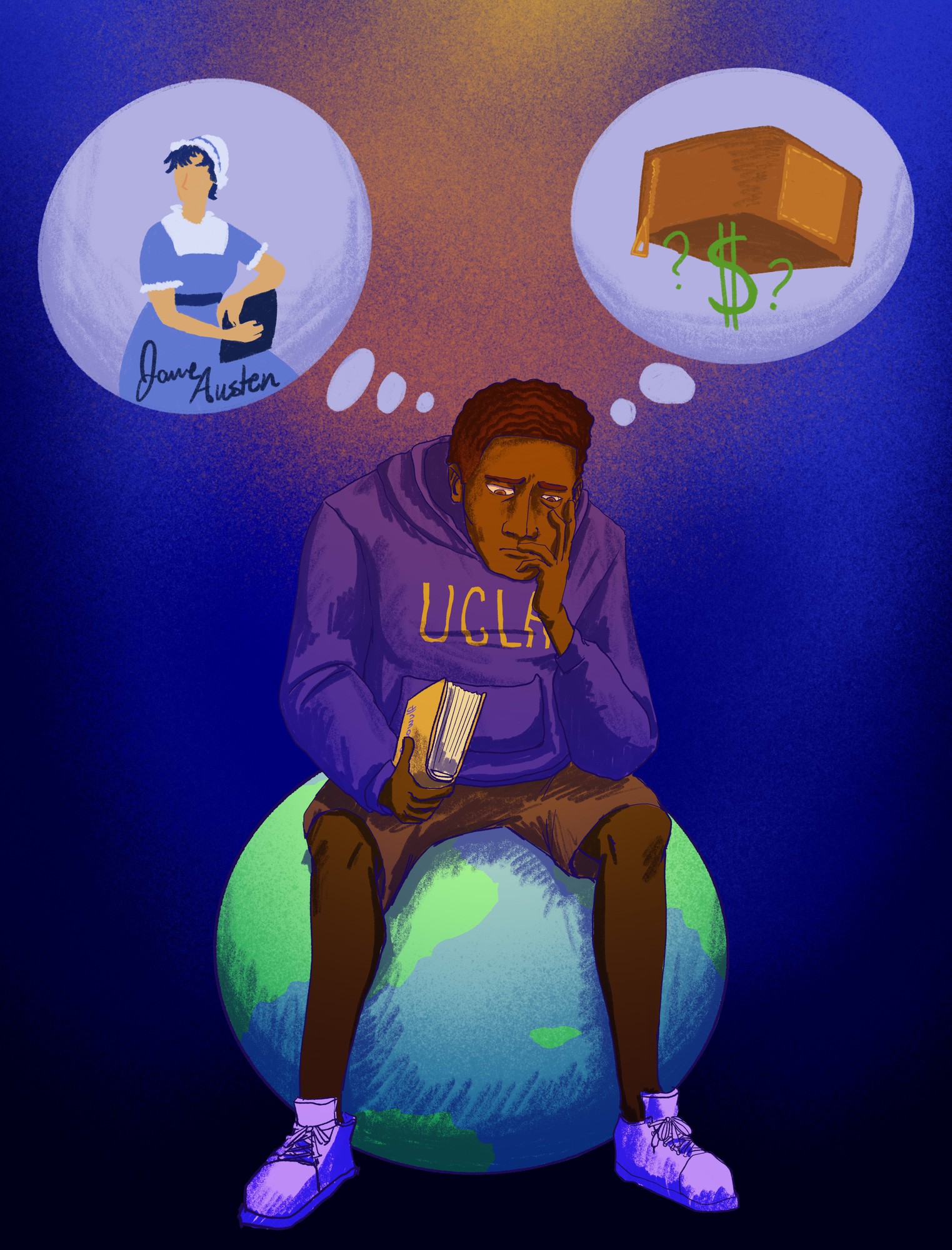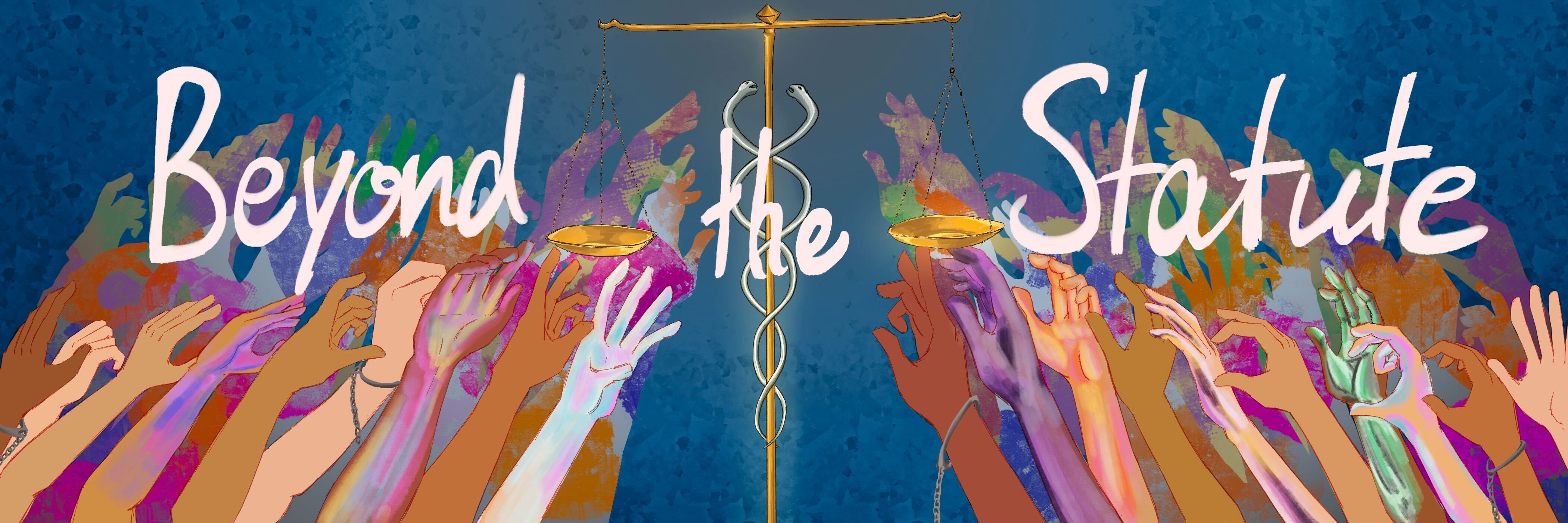Uncomfortable Conversations: Destigmatizing eating disorders takes important steps toward education, support

(Yuri Mansukhani/Daily Bruin)
By Kirsten Brehmer
Dec. 4, 2024 4:04 p.m.
This post was updated Dec. 4 at 9:25 p.m.
Editor’s note: This article contains mentions of eating disorders that may be upsetting for some readers.
“Uncomfortable Conversations” is a series by Kirsten Brehmer exploring a broad range of topics that are hard to talk about, often go unspoken and need a space to be heard. The heart of this series is the challenging experiences, questions, life events, personal struggles and conflicts that we shy away from sharing but need to talk about. She hopes this column will help create a community through conversation by advocating for the importance of growing our dialogue, educating ourselves and being open to learning and listening to one another’s opinions. Fellow Bruins are also welcome to submit op-eds or letters to the editor as part of this series to expand upon whatever conversations they believe need the space to be had.
As mental health issues are beginning to become less stigmatized, people are also becoming more vocal and open about their own mental health conditions – a clear positive.
But when certain disorders are discussed less than others, I question what kind of effect this might have on those struggling with more underrepresented diagnoses.
I have seen people tiptoe around the topic of eating disorders, and although I understand conversations regarding mental health illnesses are sensitive, this dynamic can become a deterrent when it comes to talking about eating disorders.
“I believe society still thinks that eating disorders are disorders of volition, of choice – they’re something sort of akin to a fad that people go through or disorders of sanity that people will grow out of – and so there’s this profound stigma that applies to eating disorders, which is not true,” said Dr. Stuart Murray, the Franklin Mint Professor of Psychiatry and Biobehavioral Sciences and director of the Eating Disorders Program at UCLA. “These are neural biological disorders that are basically wired into the brain of those affected, but I think given that people feel strongly that they’ll be judged if they talk about an eating disorder, or they’ll be perceived to be vain, it really stops people from talking about them.”
According to the National Institute of Mental Health, eating disorders are severe illnesses that often involve disturbances in an individual’s eating behaviors and emotional well-being. Signs of an eating disorder often revolve around, but are not limited to, obsession with levels of food intake, weight and body shape.
The American Psychiatric Association identifies four eating and feeding disorders in the DSM-5, the Diagnostic and Statistical Manual of Mental Illnesses: anorexia nervosa, binge-eating disorder, bulimia nervosa and pica.
The concept of stigma is undeniably complex and often causes an individual feeling of social isolation, shame and discrimination due to one’s personal traits, characteristics or conditions. Stigmatized labels also tend to result in repetitive negative discourse.
According to the National Library of Medicine, stigmas surrounding eating disorders can have serious negative effects for those with them, whether that includes the individual withdrawing from society, avoiding seeking treatment and help, a lowering of their self-esteem and/or the development of depressive symptoms.
“It’s almost like there’s a double shield, because you’ve got that initial shield around mental health, and then you’ve got a second shield, because there’s so many stereotypes and misunderstandings of what an eating disorder actually is,” said Jason Wood, the director of community engagement at the National Association of Anorexia Nervosa and Associated Disorders.
Often caused by external events or trauma, eating disorders can develop in conjunction with other psychiatric illnesses, according to Johns Hopkins Medicine. Just as there is not one factor that causes an eating disorder, there is also not one definition of who these disorders can affect.
“For a long time, people thought, ‘Oh, it’s a problem that only women deal with.’ But now we’re seeing a huge uptick in men experiencing eating disorders. So that’s a common misconception,” said Dr. A. Janet Tomiyama, a professor in UCLA’s department of psychology.
It doesn’t matter who you are, what you look like or where you come from – the idea that solely white women experience eating disorders is false. For example, according to the National Eating Disorders Association, racial and ethnic minorities experience the same rate of eating disorders, or higher, when in comparison to white individuals. However, when it comes to getting care, individuals who are marginalized are less likely to receive these services.
Wood said eating disorders do not discriminate against anyone’s identity. As a man, for instance, he had an eating disorder and said that often raises eyebrows.
Many people believe they can point out someone with an eating disorder, but that’s often not the case. Regardless of body size, gender, age, race or ethnicity, it is crucial never to assume whether someone does or does not have an eating disorder.
Contributing factors can range from hormones and genes to diet culture and mental illnesses. Less than 6% of individuals with eating disorders are medically classified as underweight, according to the National Association of Anorexia Nervosa and Associated Disorders.
“Oftentimes, somebody who is battling an eating disorder doesn’t ‘look like it,’” Wood said. “They are battling, but they still maintain a normal – what would appear to be a healthy – weight, but the truth is they still have that disordered relationship with food.”
It’s easy to see someone with a disorder or disability and quickly define them by their diagnosis, but these labels are often harmful to the individual and can lead to intensifying emotional and behavioral issues, according to the Center for Mental Health in Schools & Student/Learning Supports at UCLA.
According to Wood, because there is such a strong diet culture within today’s society, eating disorders can unfortunately become praised and normalized.
Tomiyama said the more positive, affirming feedback an individual with an eating disorder receives, the harder it becomes for them to acknowledge they need help.
Stigmatization literally creates a barrier, Wood said, between an individual and their choice to seek treatment, recover and to further heal.
Even clinicians sometimes respond negatively to patients experiencing eating disorders, whether by holding them responsible for their illness or feeling frustrated with their lack of recovery, according to the National Library of Medicine. Health care professionals can even lose motivation toward delivering care for patients with eating disorders because of their own adverse emotions toward the illness.
“A lot of places don’t have skilled providers that can even effectively talk about eating disorders,” Murray said.
Failing to talk about eating disorders – or neglecting to recognize them as the complicated illnesses they are – can be just as harmful as stigmatizing them. This is why more open dialogue and discussion is needed.
“The reality is more than 28 million Americans will have an eating disorder in their lifetime, which is about 9% of the country. And so it’s really not something that’s unique or esoteric or fundamentally abnormal,” Murray said.
Tomiyama shared that many individuals engage in disordered eating, even if it’s not to the level of diagnosis. Because societal pressures to look and eat certain ways can be felt all around, these beliefs can be common and continuous for everyone.
Awareness and knowledge of eating disorders must increase, but we also need to provide those experiencing them with a greater sense of community.
“It’s so important that we not just create spaces for peer support but also amplify the lived experience stories,” Wood said.
There are many ways we can foster a more accepting environment for those with eating disorders – including practices such as avoiding language that may heighten feelings of guilt or shame around eating and weight, showing more empathy toward individuals facing mental health challenges, and catching ourselves when we make assumptions or give in to inaccurate biases.
In regard to educating younger generations about eating disorders, there is a fine line those with authority must walk when spreading awareness.
“These behaviors can be catching, so when you teach people about them, you run the risk of introducing these ideas to someone who would never have dreamed of purging,” Tomiyama said.
Not only the gravity of these mental illnesses but also the consequences that accompany being informed prove why we as a society need to be more aware and educated on eating disorders.
Dismantling the stigma around these mental illnesses, while monitoring how we do so among the youth, is integral to finding a way to safely bring about awareness, recovery and healing.
Those with an eating disorder, or even coming to terms with it, should not hesitate to seek help. There is a community out there just waiting to help – don’t be afraid to find it.
And no matter what the circumstances may be, no one is alone in this.




